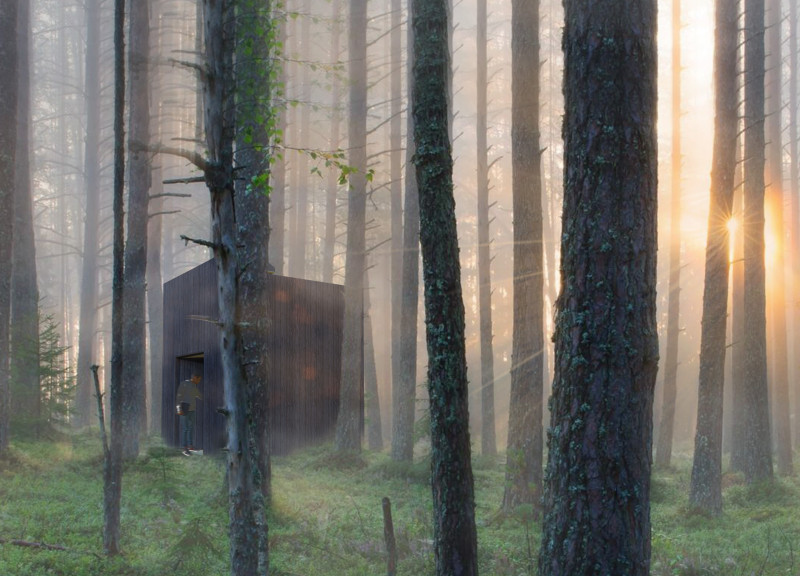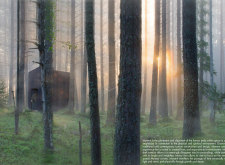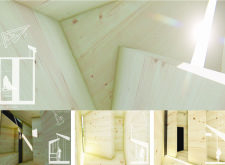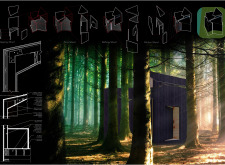5 key facts about this project
The architecture features a compact rectangular form that minimizes disruption to the landscape. The dark timber exterior harmonizes with the natural surroundings, allowing the structure to blend into its environment. Fenestration is strategically placed to frame views and optimize natural light while enhancing the occupants' experience of the changing conditions outside. The use of local materials, primarily dark and light-colored wood, demonstrates an adherence to traditional Latvian craftsmanship and sustainable practices.
Design Approach and Unique Features
A significant aspect of the project is its focus on the alignment of the human body within architectural space. This attention to sensory experience informs the overall layout, where each area serves multiple functions, promoting flexibility and adaptability. The spatial configuration allows users to transition seamlessly between different activities, encouraging a dynamic interaction with both the interior and the exterior.
Passive design strategies are central to the project. The integration of rainwater collection systems and natural ventilation methods reduces the environmental footprint. The indirect heat gain is carefully considered through window placements and slanted roofs, enhancing energy efficiency. Together, these elements underscore the project’s commitment to sustainability.
The interior spaces utilize light-colored wood to create a warm and inviting atmosphere, contrasting with the exterior finish. This deliberate choice establishes a tactile relationship between users and the materials, enhancing the sensory experience. Sloped ceilings and angled walls further facilitate the interplay of light, shaping a satisfying interior ambiance.
Architectural Insights and Exploration
The project "Moment" challenges conventional architectural norms by promoting a dialogue between built form and natural elements. It emphasizes how architecture can foster well-being through thoughtful design rather than mere aesthetics. The consideration of spatial organization, material selection, and site integration reflects a comprehensive approach to architectural design.
For those interested in delving deeper into the attributes of "Moment," exploring the architectural plans, sections, and various design elements will offer valuable insights into the project’s execution and conceptual underpinnings. This analysis serves to highlight how effective architectural strategies can lead to a more responsive and enriching experience in our built environments.


























